
The holidays are a notoriously fraught time for big feelings, loneliness chief among them. In 2017, the surgeon general declared loneliness an American “epidemic,” with “over 40% of adults” in the U.S. suffering from it. Globally, the rates rose even further when the coronavirus pandemic made gathering dangerous.
What makes things tricky is that solitude is not the same as loneliness. Likewise, physical proximity to people is not necessarily an antidote to loneliness, as anyone who has ever felt alone in the company of others knows. The feeling flares when our emotional needs for intimacy and belonging aren’t met.
Thankfully, social encounters aren’t the only way to connect. Perhaps, like me, you find solace or comfort in art. Cinema, sculpture, and theater all fit the bill, but I find there’s nothing quite like the rush of being seen by a book—that sense that the characters are right there, that the author understands something essential about how it feels to be alive. As the essayist Olivia Laing has written, “The weird gift of loneliness is that it grounds us in our common humanity. Other people have been afraid, waited, listened for news. Other people have survived.” When you are feeling alone, these eight books will make excellent companions.
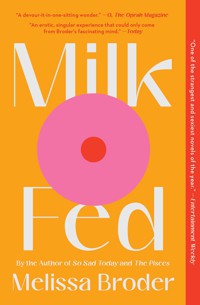
Milk Fed, by Melissa Broder
Broder’s second novel follows 24-year-old Rachel as she becomes infatuated with Miriam, the voluptuous Orthodox Jewish woman who works at the local frozen-yogurt shop and couldn’t possibly desire Rachel back. (Or could she?) Milk Fed captures the specific, and truly bleak, loneliness of trying to break out in the Los Angeles stand-up-comedy scene while working for a faux-woke talent manager and concealing an eating disorder. It combines that plot with a searching study of missing one’s estranged mother—and some of the best sex scenes I’ve ever read. Rachel sleepwalks through life before meeting Miriam, collecting boyfriends “by default” when she’s “too hungry and tired to deal with” moving their hands off her. Broder, a poet, fills in the texture of Rachel’s alienation startlingly well, making each sentence so sharp, it’s easy to miss how deeply it’s lanced you. Of her mediocre therapist, she says: “She was probably someone who genuinely enjoyed a nice pear.” Worshipping Miriam opens Rachel up to a future where she doesn’t treat her own body with contempt, and where pursuing her unruliest desires can be a kind of mitzvah. Milk Fed treats queer coming-of-age and the tumultuous road to self-acceptance with the reverence both deserve.
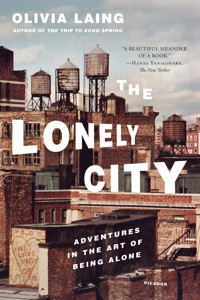
The Lonely City, by Olivia Laing
Laing’s exploration of loneliness as it intersects with art making, technology, and her experience relocating to New York in her 30s is one of my most frequently recommended books. She writes gorgeously about the visual artists David Wojnarowicz, Edward Hopper, and Andy Warhol, and many others whose work has something perceptive to say about being alone. Her writing is a warm bath for the senses, except the bathwater is seltzer: She describes the internet-entrepreneur Josh Harris’s performance-art piece Quiet, in which 60 people spent the last month of 1999 locked in a bunker that the public could observe, as “a month-long party, a psychology experiment … a hedonistic prison camp or a coercive human zoo.” I rarely laugh this hard reading cultural criticism, particularly on a topic this potentially unfunny. Before the bunker was shut down by then-Mayor Rudy Giuliani (allegedly over concerns that it was a cult), it had become a brutal display of sex, defecation, and aggression, despite the project’s supposed ethos of togetherness. This anecdote is one of many that Laing carves into like she’s cutting unrefined crystal, exposing its luster. The Lonely City makes its heavy research endlessly interesting.

For many writers, Johnson is the patron saint of loneliness, and his semiautobiographical cult hit, Jesus’ Son, is scripture for learning how to write volcanic prose that aches. His narrator, referred to throughout the linked story collection as “Fuckhead,” longs for connection but settles for alcohol and heroin. Fuckhead’s prophetic, addled voice brings us sentences such as “The travelling salesman had fed me pills that made the lining of my veins feel scraped out … I knew every raindrop by its name” and “The sky is blue and the dead are coming back.” In the opening story, “Car Crash While Hitchhiking,” Fuckhead catches a ride with a young family just before they get into a terrible accident. I’ve never forgotten how he describes the wife of the man driving the other car learning that her husband has died: “She shrieked as I imagined an eagle would shriek. It felt wonderful to be alive to hear it! I’ve gone looking for that feeling everywhere.” These brief moments of transcendence, often experienced with fellow misfits, stave off the existential solitude always threatening to pull Fuckhead under—if only for another moment, if only until the drugs kick in.
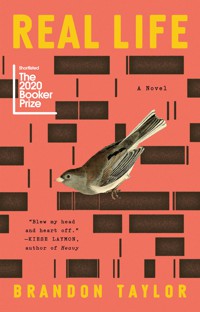
Real Life, by Brandon Taylor
In Taylor’s debut novel, Wallace, a Black queer young man from Alabama, navigates the racism and tricky interpersonal politics of his predominantly white Ph.D. program in the Midwest. Real Life is a master class in depicting the penetrating feeling of isolation in a crowd, including among people who ostensibly care. A charged love affair with an allegedly straight classmate tests the boundaries of Wallace’s (partly self-imposed) alienation from his peers. “There is a difference between entering someone, being in someone, and being with that person,” he thinks. “There is an impossibility to the idea of simultaneously existing within them and beside them.” One of the most moving chapters is a nine-page interlude in which he shares the intimate details and casual violence of his childhood. Taylor is one of our foremost chroniclers of social friction, whether he is conjuring chaotic dinner parties at which everyone says the wrong thing or describing how difficult—maybe unworkable—it is to fully see and be seen by others.

Bluets, by Maggie Nelson
Bluets is a group of prose poems, or perhaps a book-length essay, about the carnage of lost love. A few pages in, Nelson admits that she’s been at work on a book about the color blue—which she’s become obsessed with—“for years without writing a word. It is, perhaps, my way of making my life feel ‘in progress’ rather than a sleeve of ash falling off a lit cigarette.” Bluets is meditative, devastating, and unexpectedly funny, even as Nelson recalls caring for a friend who suddenly became quadriplegic and her own grief after being left for another woman. So how does one fall in love with a color? “It began slowly. An appreciation, an affinity. Then, one day, it became more serious … It became somehow personal,” Nelson writes. The color does not replace the speaker’s aloneness, but it becomes its container. This makes me think of the Louise Glück line “At the end of my suffering / there was a door,” and how loss catapults us into the arms of whatever can make us feel held. Blue is Nelson’s door to hope, and a world in which she can become “a student not of longing, but of light.”
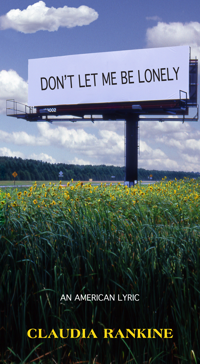
Don’t Let Me Be Lonely, by Claudia Rankine
Whether you’re a fan of Citizen—Rankine’s best-selling meditation on the accretive toxicity of everyday racism—or new to her work, her acolytes will insist that you not overlook Don’t Let Me Be Lonely. An ingenious collection of news stories, photographs, and personal narrative, it unpacks the desolation of cancer and depression, of the George W. Bush years, of America’s consistently insufficient response to white supremacy. Rankine’s words are frank and mesmerizing. One poem in the form of a conversation reads, “Define loneliness? / Yes. / It’s what we can’t do for each other.” Don’t Let Me Be Lonely is similar in its experimental structure to Bluets, except the disaster at its center is not romantic but cultural. Of the first—and, for 73 days in 2001, only—person living with an artificial heart, Rankine writes, “His was a private and perhaps lonely singularity. No one else could say, I know how you feel.” Despite the uncertainty of her subject matter, the author has an assured voice that never falters.
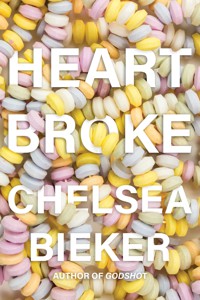
Heartbroke, by Chelsea Bieker
Bieker’s collection chronicles Californians, mostly women, in the Central Valley who go to extremes to escape their lives, or, at the very least, to let some air in. Heartbroke is wildly original: The first story opens with “Now I didn’t know a thing about mining when I got into it with Spider Dick one night working at the Barge.” The bold choice to call the first named character “Spider Dick” fits right in with Bieker’s clear-eyed candor and her vivid rendering of people who come alive on the page. The protagonists have learned to find grace and humor amid constant indignity. Their dangerous desires—to run away with a murderous outlaw, to steal an unhoused woman’s baby, to consider pursuing a creative-writing career with no solid indication that one has the talent for it—bring them pain and magnificence. Short stories are often best savored slowly, but I tore through Heartbroke as though one of its protagonists were holding a gun to my head.

¡Hola Papi!, by John Paul Brammer
Describing a Grindr hookup in college, Brammer writes, “Taking my clothes off, I must have looked like I was preparing to be executed, because he asked, ‘Are you sure you want to do this?’” Adapted from Brammer’s advice column of the same name, ¡Hola Papi! is a raucous contemplation of the loneliness of being closeted and biracial and the ecstasy of living on your own terms. He answers reader queries with self-effacing honesty, as when he tells the person who asked “How do I let go of a rotten relationship?” about the cognitive dissonance he’d felt while convincing himself that “getting naked with my ‘best friend’ from high school was just two hetero bros doing regular hetero-bro stuff.” Brammer’s essays address evergreen questions such as “How do I make peace with the years I lost in the closet?” and “How do you keep chasing your dreams even though you’re most definitely a failure?” No one writes like him: He’ll proclaim something outlandish but obviously true, like “Hot people often walk like nothing bad has ever happened to them,” and follow it up with advice that feels like it’s coming from an old friend who wants nothing more than to see you thrive. The results are tender, hysterical, and wise.
When you buy a book using a link on this page, we receive a commission. Thank you for supporting The Atlantic.







